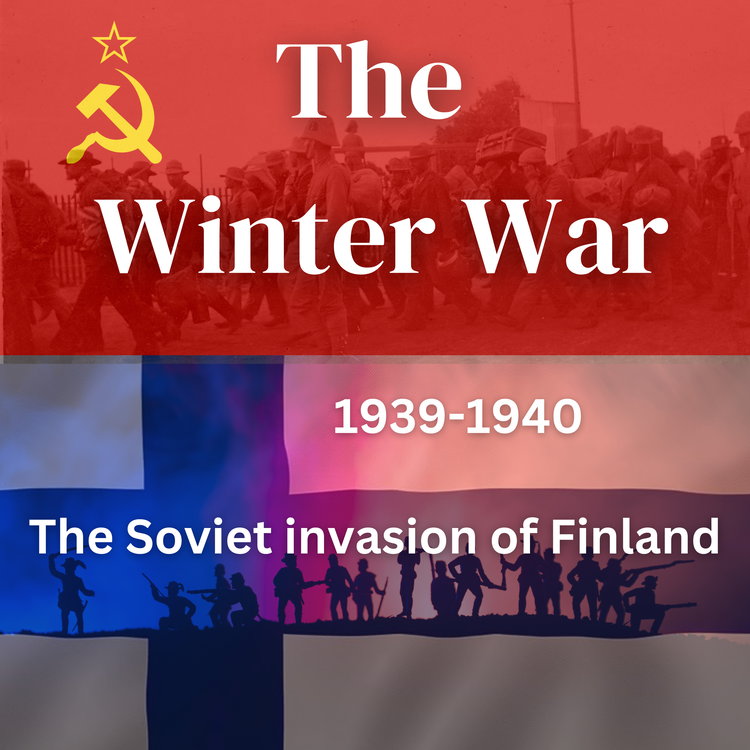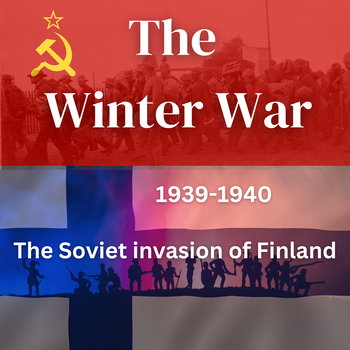
Episode 11 - The Russian 123rd Division breaks through the Mannerheim Line at Poppius Bunker
Loading player...
This is episode 11 and it’s February 1940.
The Russians are having another go at invading Finland, and now they’ve learned a few lessons. As you heard last episode, there had been a build up through late January.
While Finland’s political leaders had been desperately trying to start up peace talks with the Soviet Union, Stalin had been fretting about reports that Britain and France were planning to send troops and material to help the Finns.
The Stavka had rearranged the Russian forces in preparation for the new assault on the Mannerheim Line along the Karelian Isthmus planned to begin in the second week of February.
A preliminary Soviet bombardment began on morning of Sunday the 11th February. Then the Red Army troops each received a ration of 100ml of Vodka per man to fortify before they began their advance at noon. The initial attacks by the Russian 19th Rifle Corps in the east of the Isthmus were repelled by the Finns, Gorelenko’s 50th Corps managed to gain some ground.
However the major achievement for the Russians on the 11th was the successful attack by the 123rd Rifle Division under Brigade Commander Philip Aljabushev who pierced Colonel Paavo Paalu’s 3rd Division lines east of Lake Summa.
That was along the Lahde Road, a point of repeated attacks through this war.
By 13h00 hours the Soviets had captured a major strategic point known as the Poppius bunker as well as all strongpoints east of it as you’ll hear shortly.
Timoshenko’s plan here was working. He’d softened up the Finns since late January, escalating the bombardment and bombing runs from February 1st, so after ten days of round the clock pounding, the cumulative effect had drained the Finns.
Finnish General Ohquist had been vocal about one of the weak points in his line before the war began, and this was the very spot where the Russians focused their assaults. Ohquist had built two large and imposing defensive positions which dominated this portion of the line, one was called the Million Dollar bunker, the other, the Poppius bunker. There were three other concrete pillboxes spread along between these two points but they were twenty years old and shattered by the Russian artillery barrages.
The Million Dollar bunker had been built at a kink or a dog’s leg in the line, where it turned sharply south, then twisted east.
There was some geographical advantage, to the north west lay a swamp which meant the Russians would be funnelled into any attack from the south east. But the landscape here was gentle, and lightly wooded, ideal for their armour. It’s mine-fields had been churned up by the bombardments and the wire entanglements had been snapped, there were large avenues opened up between them on the eve of this engagement.
When the JR-9 battalion arrived early on the morning of the 11th February it was dark, they had no time to acclimatise because the Russian bombardment was going to begin before dawn.
Timoshenko linked up his forces opposite this stretch of the Mannerheim line in the foggy dark, it was extremely cold minus 22 degrees Celcius. The Russian had moved 18 Divisions and five tank brigades into place along the entire Karelian Isthmus in preparation for this final big push.
The Russians are having another go at invading Finland, and now they’ve learned a few lessons. As you heard last episode, there had been a build up through late January.
While Finland’s political leaders had been desperately trying to start up peace talks with the Soviet Union, Stalin had been fretting about reports that Britain and France were planning to send troops and material to help the Finns.
The Stavka had rearranged the Russian forces in preparation for the new assault on the Mannerheim Line along the Karelian Isthmus planned to begin in the second week of February.
A preliminary Soviet bombardment began on morning of Sunday the 11th February. Then the Red Army troops each received a ration of 100ml of Vodka per man to fortify before they began their advance at noon. The initial attacks by the Russian 19th Rifle Corps in the east of the Isthmus were repelled by the Finns, Gorelenko’s 50th Corps managed to gain some ground.
However the major achievement for the Russians on the 11th was the successful attack by the 123rd Rifle Division under Brigade Commander Philip Aljabushev who pierced Colonel Paavo Paalu’s 3rd Division lines east of Lake Summa.
That was along the Lahde Road, a point of repeated attacks through this war.
By 13h00 hours the Soviets had captured a major strategic point known as the Poppius bunker as well as all strongpoints east of it as you’ll hear shortly.
Timoshenko’s plan here was working. He’d softened up the Finns since late January, escalating the bombardment and bombing runs from February 1st, so after ten days of round the clock pounding, the cumulative effect had drained the Finns.
Finnish General Ohquist had been vocal about one of the weak points in his line before the war began, and this was the very spot where the Russians focused their assaults. Ohquist had built two large and imposing defensive positions which dominated this portion of the line, one was called the Million Dollar bunker, the other, the Poppius bunker. There were three other concrete pillboxes spread along between these two points but they were twenty years old and shattered by the Russian artillery barrages.
The Million Dollar bunker had been built at a kink or a dog’s leg in the line, where it turned sharply south, then twisted east.
There was some geographical advantage, to the north west lay a swamp which meant the Russians would be funnelled into any attack from the south east. But the landscape here was gentle, and lightly wooded, ideal for their armour. It’s mine-fields had been churned up by the bombardments and the wire entanglements had been snapped, there were large avenues opened up between them on the eve of this engagement.
When the JR-9 battalion arrived early on the morning of the 11th February it was dark, they had no time to acclimatise because the Russian bombardment was going to begin before dawn.
Timoshenko linked up his forces opposite this stretch of the Mannerheim line in the foggy dark, it was extremely cold minus 22 degrees Celcius. The Russian had moved 18 Divisions and five tank brigades into place along the entire Karelian Isthmus in preparation for this final big push.

